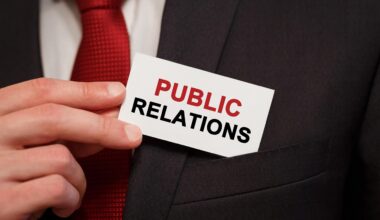Balancing Profit and Promotion: Strategies for Sustainable Pricing
Promotional pricing involves temporarily reducing prices to stimulate demand and attract customers. This pricing strategy has become an indispensable tool for many businesses seeking to enhance sales volume and market share. However, balancing profitability with promotional tactics can be challenging. Companies must analyze market conditions, competitor behavior, and consumer preferences when developing their promotional pricing approaches. Implementing well-structured promotional pricing can lead to increased foot traffic and demand. Clear pricing offers resonate deeply with consumers, leading to stronger brand loyalty. Effective communication plays a pivotal role in this context, allowing firms to convey the value of promotions to their target audience. Both short-term and long-term effects of promotional pricing must be considered. Short-term gains are alluring but may lead to profit erosion if overused. Instead, brands should focus on sustainable promotional pricing that positions them competitively over time. This requires meticulous planning and execution to ensure prices reflect value without sacrificing profitability. Overall, understanding how promotional pricing impacts both consumers and profit margins is essential to crafting effective strategies for sustainable pricing.
One effective approach to promotional pricing is the use of discounts to drive sales during specific seasons or events. Seasonal promotions can effectively pique consumer interest and encourage purchasing behavior. For instance, holidays, back-to-school seasons, and summer sales typically create heightened demand for certain products. However, businesses need to conduct thorough research to determine the optimum timing and extent of these discounts. Setting clear objectives for each promotional campaign is vital to measure success. Factors to consider include target audience, market trends, and competitor actions. Analyzing historical sales data helps identify which promotions successfully resonated with customers in the past. Brands can thus build trust with customers by using discounts as a means to provide genuine value rather than merely clearing inventory. This creates a win-win situation: consumers benefit from attractive offers while businesses enjoy increased revenue potential. However, to avoid diminished value perception, businesses should ensure promotions are perceived as limited-time offers rather than permanent adjustments. This strategy allows them to keep sales robust while avoiding any long-term negative impacts on profitability.
Implementing Loyalty Programs
Loyalty programs serve as a powerful marketing tool that complements promotional pricing strategies. By rewarding repeat customers, businesses can boost repeat purchases and drive long-term revenue growth. Developing a robust loyalty program involves understanding customer behaviors and preferences, allowing businesses to create tailored rewards. These programs often use points systems, where customers earn points for each purchase that can be redeemed for discounts or exclusive offers. An effective loyalty program requires ongoing engagement to keep it relevant and appealing to customers. Businesses should focus on delivering personalized experiences that resonate with the target audience. This can include tailored promotions based on purchasing history and preferences. For example, data analytics can reveal common purchasing patterns, enabling targeted offers. By balancing promotional pricing and loyalty programs, companies not only incentivize immediate purchases but also nurture lasting customer relationships. Furthermore, happy repeat customers are more likely to showcase their loyalty through word-of-mouth marketing. Hence, integrating loyalty programs with promotional pricing creates a synergistic effect that amplifies overall sales performance.
Clear communication is essential when implementing promotional pricing strategies. Businesses must effectively articulate the value of a promotion to their audience to drive consumer engagement. Marketing channels such as social media, email newsletters, and websites serve as platforms for such communication. Crafting compelling promotional messages that highlight benefits over mere price reductions can pique consumer interest. Creativity in messaging can set a brand apart from competitors. Additionally, visuals such as eye-catching graphics or images can significantly enhance promotional content. Utilizing storytelling in marketing campaigns can foster emotional connections with consumers, promoting brand allegiance. Furthermore, ensuring consistency in communication across all platforms reinforces the promotion’s message and brand identity. Businesses must be transparent about the duration of promotions to avoid consumer confusion. Open communication regarding the terms and conditions of offers is crucial for maintaining customer trust. Such approaches can strengthen the bond between brands and consumers, leading to better customer satisfaction and loyalty. Effective communication, coupled with attractive promotional pricing, sets the stage for not only driving immediate sales but also fostering long-term growth and brand loyalty.
Evaluating the Effectiveness of Promotions
Monitoring the performance of promotional pricing strategies is vital to ensuring long-term success. Businesses need to implement metrics and analytics to assess the effectiveness of their promotional campaigns continuously. Key performance indicators (KPIs) such as sales volume, customer acquisition costs, and average transaction value provide insights into how promotions are performing. Additionally, customer feedback and surveys can yield qualitative data that is just as valuable. Understanding why consumers are responding positively or negatively to promotions can drive adjustments accordingly. A/B testing, where two variations of a promotion are tested against each other, can be an effective way to evaluate consumer preferences and optimize future campaigns. Businesses should also analyze external factors such as market trends and competitor promotions to contextualize their performance metrics. By actively reviewing these elements, companies can fine-tune their pricing strategies to align with changing consumer behaviors. This ongoing evaluation process not only guides immediate improvements but also informs long-term strategic decisions. The insights garnered enable organizations to maintain relevance in a competitive landscape, thus achieving sustained profitability.
Customer segmentation is another crucial strategy when deploying promotional pricing effectively. Not all customers respond the same way to promotions, and segmenting the customer base allows businesses to tailor offers more precisely. By analyzing demographics, purchase history, and behavioral data, companies can create targeted promotions that resonate with specific groups. For instance, younger consumers may be more motivated by immediate discounts, while older customers might appreciate loyalty rewards or value-added offers. Identifying these differences enables marketers to design personalized campaigns that speak directly to segmented audiences. Furthermore, utilizing automation tools can simplify the implementation and management of targeted promotions. This enables businesses to react quickly to market changes and customer preferences. Creating a sense of urgency, such as limited-time offers, can trigger purchasing decisions with urgency in limited-time promotions. By leveraging customer segmentation, brands can not only enhance engagement but also maximize the effectiveness of their promotional pricing strategies. Tailored promotions deliver added value and cultivate loyalty among diverse customer segments, contributing to the overall success of marketing efforts.
Conclusion on Sustainable Pricing
In conclusion, balancing profit with promotional pricing requires strategic thought and methodologies. While attractive price reductions may drive short-term sales, businesses must focus on long-term sustainability. Keywords are understanding customer needs, leveraging data, and creating compelling messages that align with brand value. Successful businesses employ promotional pricing as part of a broader pricing strategy, ensuring alignment with overall business goals. Establishing clear objectives and maintaining ongoing analysis allows brands to optimize promotional pricing effectively. Implementing loyalty programs enhances customer retention and provides enduring value beyond immediate promotions. Overall, a well-rounded approach to promotional pricing leads to sustainable profitability and stronger customer relationships. Fostering transparency and being responsive to customer feedback can significantly influence how promotions are perceived and received. As market conditions evolve, businesses must remain adaptable, learning from past experiences to better shape future promotional endeavors. The careful crafting of promotional pricing tactics can create a solid foundation for a brand’s future success. In the competitive marketplace, those who strategically balance profit and promotions will stand to gain not only financially but also in brand loyalty and trust.
Ultimately, companies that grasp the intricate dynamics of promotional pricing can secure a competitive edge. As they navigate the landscape of consumer behavior and market fluctuations, their ability to combine pricing strategies with effective marketing will determine their longevity. Embracing innovation, listening to feedback, and prioritizing customer experiences can move organizations closer to achieving their promotional pricing goals. By continually evolving promotional strategies and integrating data-driven insights, brands can build resilient pricing frameworks that thrive even amid industry disruptions. Promotion should never just center on price cuts but focus on personalized experiences that create lasting impressions on consumers. The success of promotional pricing lies in fostering relationships rather than simply driving transactions. Formulating distinct value propositions that align with customer priorities paves the way for brands to resonate deeply with their audiences. Hence, positioning promotional pricing as a tool for engagement provides restorative advantages while creating avenues for organic growth. As they maintain this balance, brands will cultivate customer loyalty and enhance their market performance over time, proving that sustainable pricing can lead to long-lasting success.


